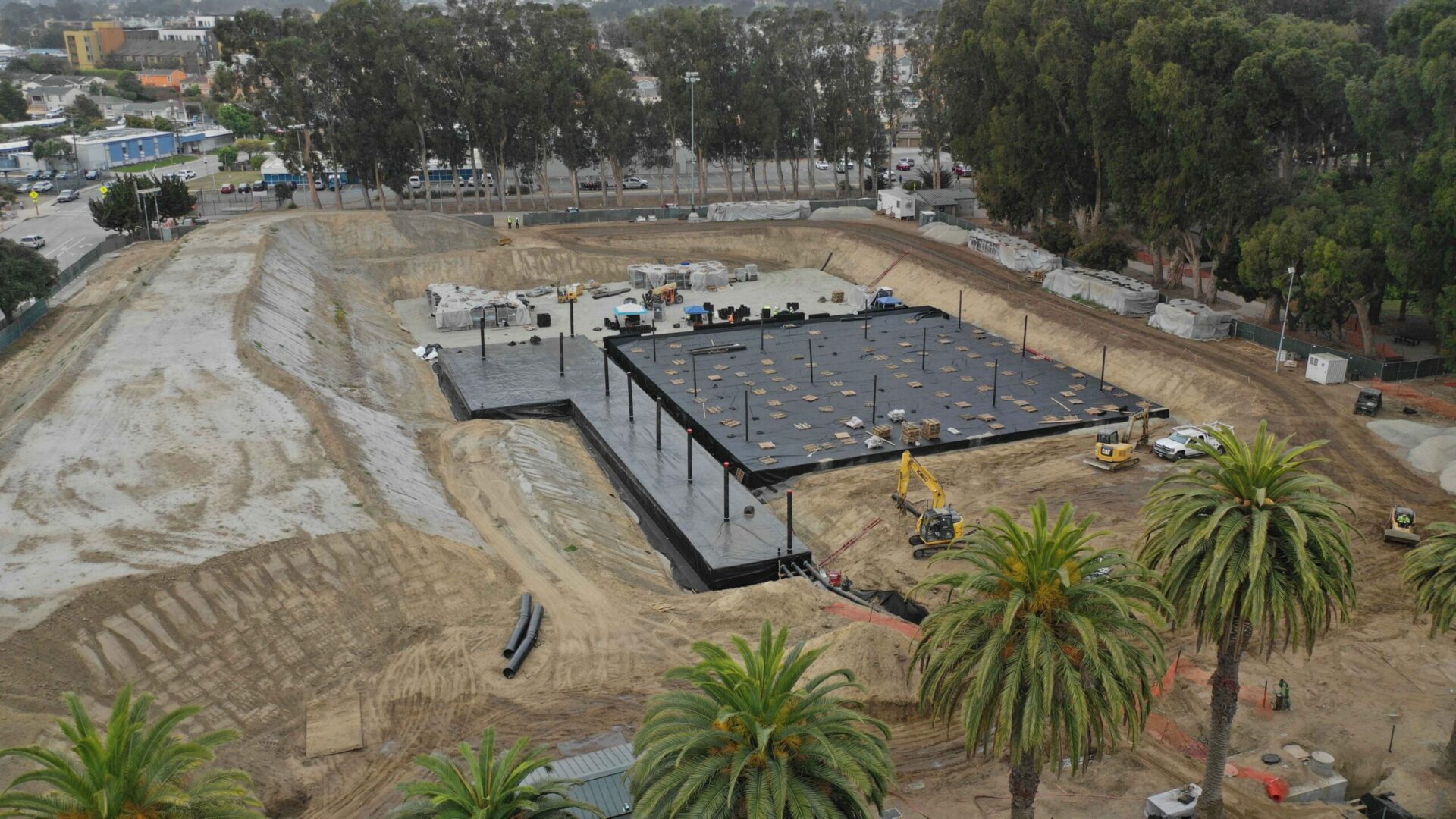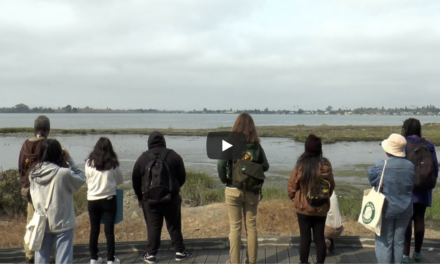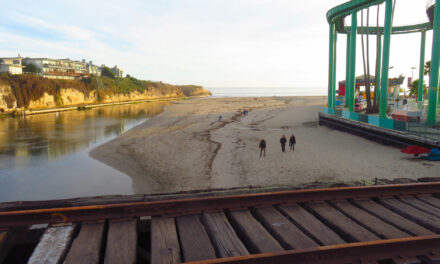Regional Storm Capture Facility Going to Ground
With rains overwhelming local drains in late October, the visible construction progress over the summer on Orange Memorial Park, a regional stormwater capture facility in South San Francisco, seems timely.
More than 6,500 acres of the Colma Creek watershed, in six municipalities, drain through the new regional facility. The facility, scheduled for completion in 2022, includes trash screens, a sediment removal chamber, and a giant storage basin under sports fields. It is designed to filter pollutants in runoff, percolate groundwater, and irrigate local parks and trailsides (offsetting potable water demand).
Former San Mateo County stormwater director Matt Fabry calls it “An ambitious multi-benefit project with water quality and resilience benefits.”
Areas sensitive to erosion on the half-constructed park weathered the recent atmospheric rain event under tarps and behind silt fences.
Current construction activities for the complex stormwater capture project are focused on excavation of a large subsurface drainage system. Crews recently installed modules for a 1.4 million gallon-below-ground cistern and infiltration gallery, and are working to connect pipework, maintenance ports and manholes. Installation of the modules will continue into November, followed by back filling of the entire system.

Two parts of the project located within Colma Creek, including a trash and sediment capture system (aka grit filter), required permits from the Peninsula’s fledgling Sea Level Rise and Resiliency District, US Fish and Wildlife, and the Regional Water Quality Control Board. Work in the creek also required completion before October 1 to avoid disturbing birds nesting in the riparian zone. Surface restoration will be a next step.
“We had to switch regulatory gears mid-permitting from the county flood district to the new sea level rise and resiliency district,” says project manager Bianca Liu, from the City of San Francisco. “There’s a lot of eyes on us because this the first regional scale stormwater capture and green infrastructure project, and it sets a precedent for the future.”
Project costs are $15.5 million, bankrolled by Caltrans and local jurisdictions to fulfill stormwater management mandates and mitigate for trash, PCBs, and other polluted runoff to the Bay. The project also optimizes water use and groundwater recharge in times of drought.
“When the capture basin is full, we’ll be putting the excess, clean water rather than dirty water, back into the creek,” says Liu.
The project is one of a variety of multi-partner initiatives to improve water quality and flood capacity along Colma Creek, including projects still in proposal stages inspired by the 2018 Resilient by Design Bay Area Challenge vision for the Colma Creek Watershed.
With Orange Memorial Park under construction, meanwhile, the debate over how to optimize infrastructure investments far into the future now has one tangible new example.
“This wasn’t your typical infrastructure project, the regional scale created a lot of challenges in permitting, funding and interjurisdictional decision-making. Our next challenge will be how to collaborate on O&M,” says Liu, referring to operations and maintenance responsibilities and budgets that no municipality wants to shoulder alone.
Keeping the new park and its complex underground hardware working far into the future won’t be cheap. But kids will be able to kick and bat balls on sports fields on top of the stormwater basin by 2023.
Other Recent Posts
Assistant Editor Job Announcement
Part time freelance job opening with Bay Area climate resilience magazine.
Training 18 New Community Leaders in a Resilience Hot Spot
A June 7 event minted 18 new community leaders now better-equipped to care for Suisun City and Fairfield through pollution, heat, smoke, and high water.
Mayor Pushes Suisun City To Do Better
Mayor Alma Hernandez has devoted herself to preparing her community for a warming world.
The Path to a Just Transition for Benicia’s Refinery Workers
As Valero prepares to shutter its Benicia oil refinery, 400 jobs hang in the balance. Can California ensure a just transition for fossil fuel workers?
Ecologist Finds Art in Restoring Levees
In Sacramento, an artist-ecologist brings California’s native species to life – through art, and through fish-friendly levee restoration.
New Metrics on Hybrid Gray-Green Levees
UC Santa Cruz research project investigates how horizontal “living levees” can cut flood risk.
Community Editor Job Announcement
Part time freelance job opening with Bay Area climate resilience magazine.
Being Bike-Friendly is Gateway to Climate Advocacy
Four Bay Area cyclists push for better city infrastructure.
Can Colgan Creek Do It All? Santa Rosa Reimagines Flood Control
A restoration project blends old-school flood control with modern green infrastructure. Is this how California can manage runoff from future megastorms?
San Francisco Youth Explore Flood Risk on Home Turf
At the Shoreline Leadership Academy, high school students learn about sea level rise through hands-on tours and community projects.










